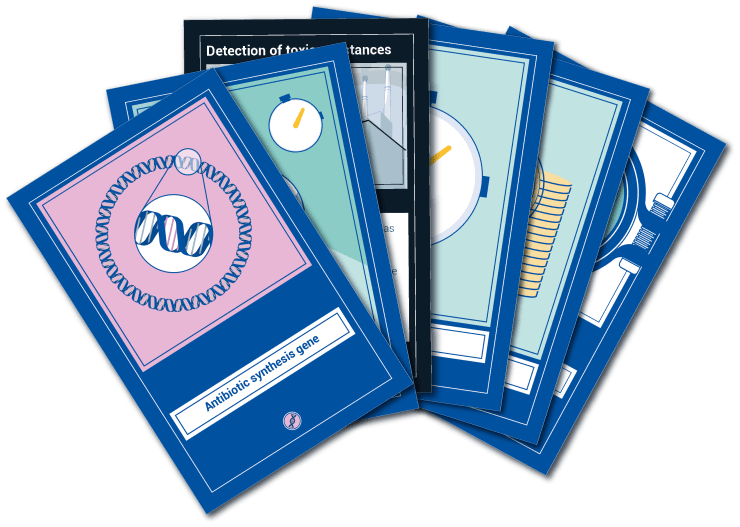Earlier this week, RaftsTheGame (@TheRaftsGame) popped up on my twitter feed, which was excellent timing since it’s getting close to Christmas in a year (2020) when I imagine a lot of people may be home and inclined to play games.
The people (rafts4biotech) who produced Rafts The Game (also called Rafts!) are involved in a research project funded by the European Union’s Horizon 2020 programme,
RAFTS!
Create the bacterium of your dreamsHave you ever wondered what it would be like to be a genetic engineer? Now’s your chance to find out! Rafts! is a card game in which your aim is to design a bacterium while trying to overcome the challenges of research work.
If you are a researcher, look no further – Rafts! enables you to finally share your academic struggles with those friends who don’t have a clue of what you do!
THE GAME
In Rafts! you race to become the first scientist to create a bacterium that can do incredible things: cleaning an oil spill, detecting toxic compounds, producing blood for donations… Sounds like science fiction? More like a regular day at the lab!
But don’t get carried away – nobody said conducting research was easy! Hard work alone isn’t enough if you don’t have the right genetic instructions as well as a combination of money, time as well as food for your bacterium. You’ll have to collect all of these resources to finish the masterpiece that is your bacterium.
In this laboratory people play dirty, so don’t forget to keep an eye on your colleagues – they are all trying to achieve their objectives, and sometimes you will compete for the same resources. Don’t hesitate to strike back!
THE CARDS
There are three types of cards in Rafts!: action cards help you gather the resource cards that you will need to achieve the goal in your objective card. Bring your mouse on top of a card to know what it can do!
…
GET YOURS
Ready to become the biotech wizard you’ve always wanted to be? You’re just a click away from building the bacterium of a lifetime!
Download Rafts! for free and print it yourself – or let your local print shop do it for you:
Order a ready-made Rafts! deck to your doorsteps – by clicking on the link we direct you to the card shop where you can finish your order:
…
Here’s what the cards look like,

The rules of the game are here.
For anyone curious about the source for the game, here’s a bit about rafts4biotech, from the homepage,
Engineering bacterial lipid rafts to optimise industrial processes
Context
Bacteria are used in the biotechnology industry to produce a wide range of valuable compounds. However, the performance of these microorganisms in the demanding industrial conditions is limited by the toxicity of some compounds and the complex metabolic interactions that occur within the bacterial cells.
Challenge
Generating new synthetic microorganisms that will solve productivity hurdles and yield a great variety of economy-value compounds. These modified strains will be used as standardised microbial chassis platforms to fit industry needs.
Solution
The R4B solution relies on confining the production of compounds to specific areas of the microbe’s membrane called lipid rafts. This recently-discovered regions present an ideal setting that will avoid interferences with bacterial metabolism and viability.
…
Given that at least one of the COVID-19 vaccines (Pfizer-BioNTech?) is wrapped in lipid nanobodies and, now, with this mention of lipids, it seemed like a good idea (for me) to learn about lipids. Here’s what I found in the definition for lipid in The free Dictionary,
a group of substances comprising fatty, greasy, oily, and waxy compounds that are insoluble in water and soluble in nonpolar solvents, such as hexane, ether, and chloroform.
…
Let the games begin!